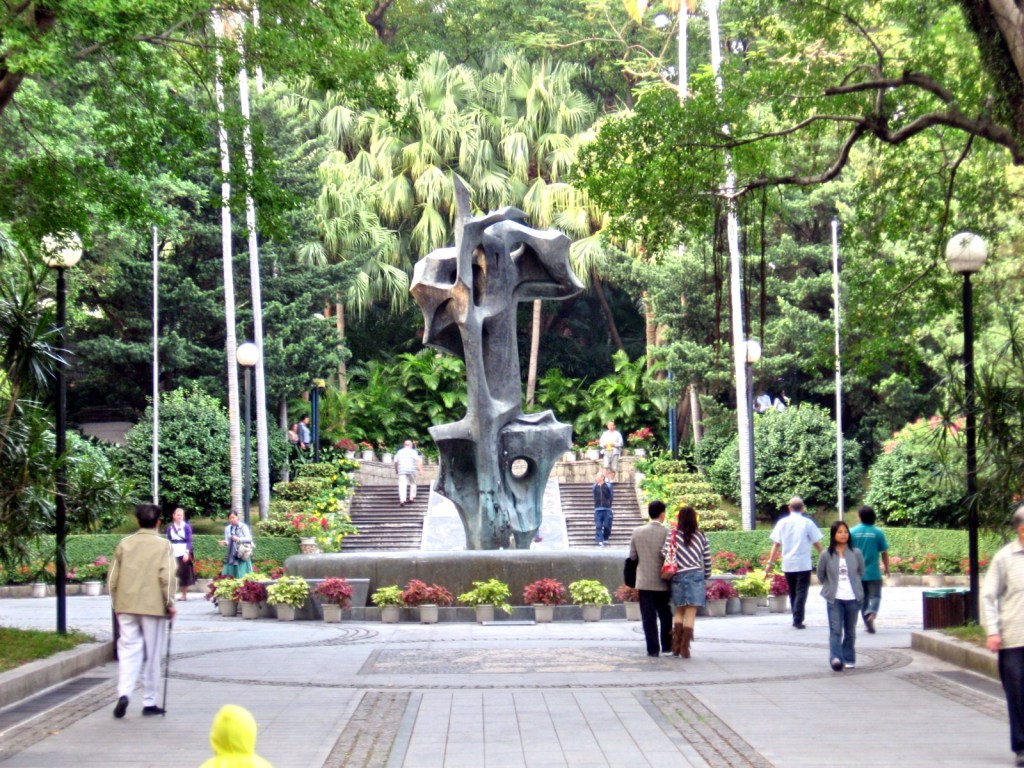From the Barrier Gate, Jandy, Cheska and I took the public bus and dropped off at the hilly, heavily wooded Camoes Garden (also known as Dove’s Nest), one of Macau’s oldest parks and its largest (at nearly 20,000 sq. m.). Upon entry into the park, we were welcomed by a fountain, built in 1990, that contains a bronze sculpture entitled Embrace, specially made to symbolize the centuries’ old friendship between Portugal and China.
The land where the park stands was donated by a Portuguese merchant, after his death, to the government. It was later opened to public as a memorial garden dedicated to Luis Vaz de Camoes (1524-June 10, 1580), Portugal’s greatest poet, who was exiled to Macau for 2 years, after riling the court officials.
We visited the Cameos Grotto, the most famous scenic spot in this garden. Here, Luis de Camoes lived in a cave where he later finished Os Lusiadas (Soul of Portugal), the national epic that chronicles the great Portuguese explorations that created the world’s first globe-girdling empire. His bronze bust was installed in natural rocky alcove in the wooded garden in 1886 when the grotto became state property.
In front of the grotto is a spacious and pleasant garden, with benches shaded by banyan trees, where people meet with friends or bring their caged birds (a Chinese custom) for an outing. At the far end of the park is a statue dedicated to martyred St. Andrew Kim Taegon (August 21, 1822-September 15, 1846), the first Korean Catholic priest. Camoes Garden also comes alive in the morning when groups perform slow, silent t’ai chi or lively aerobics.
Walking along the winding path, we reached the Gazebo, a Chinese pavilion at the highest point in the park. Here, stone tables and stools were installed for local people to rest, read newspapers, play Chinese checkers or chess, or enjoy the panoramic view of the city’s Inner Harbor.
Luis de Camoes Gardens: Praca Luis de Camoes, Macau. Open daily, 6 AM-10 PM.





